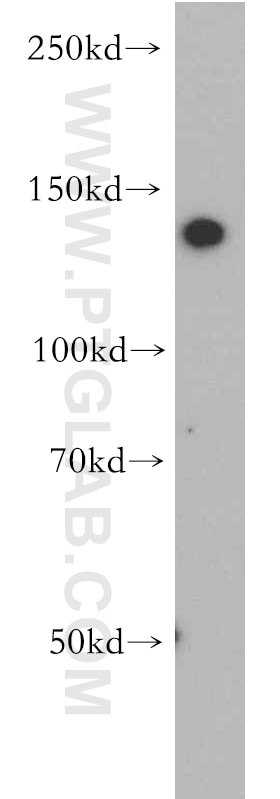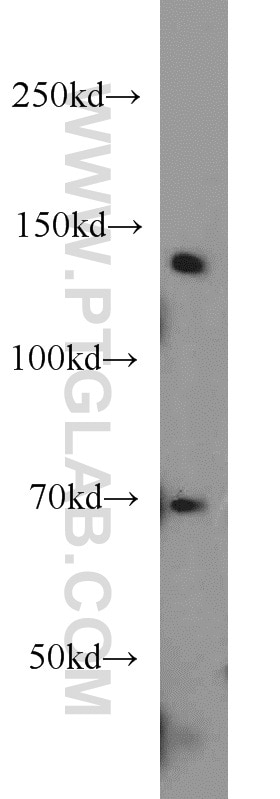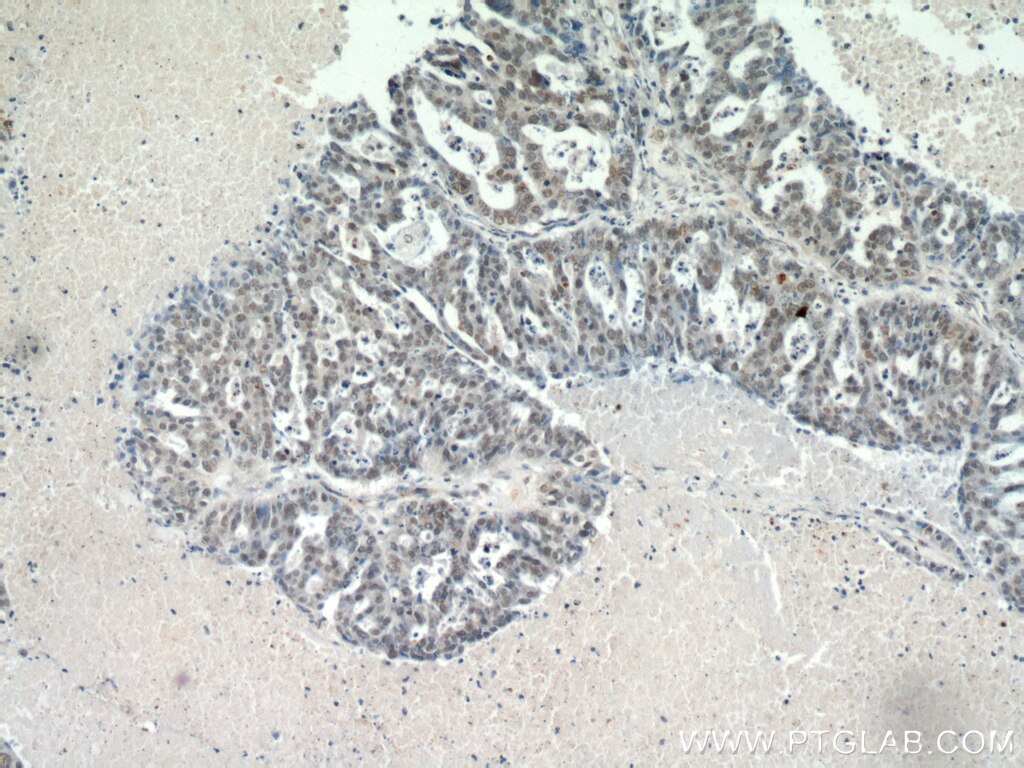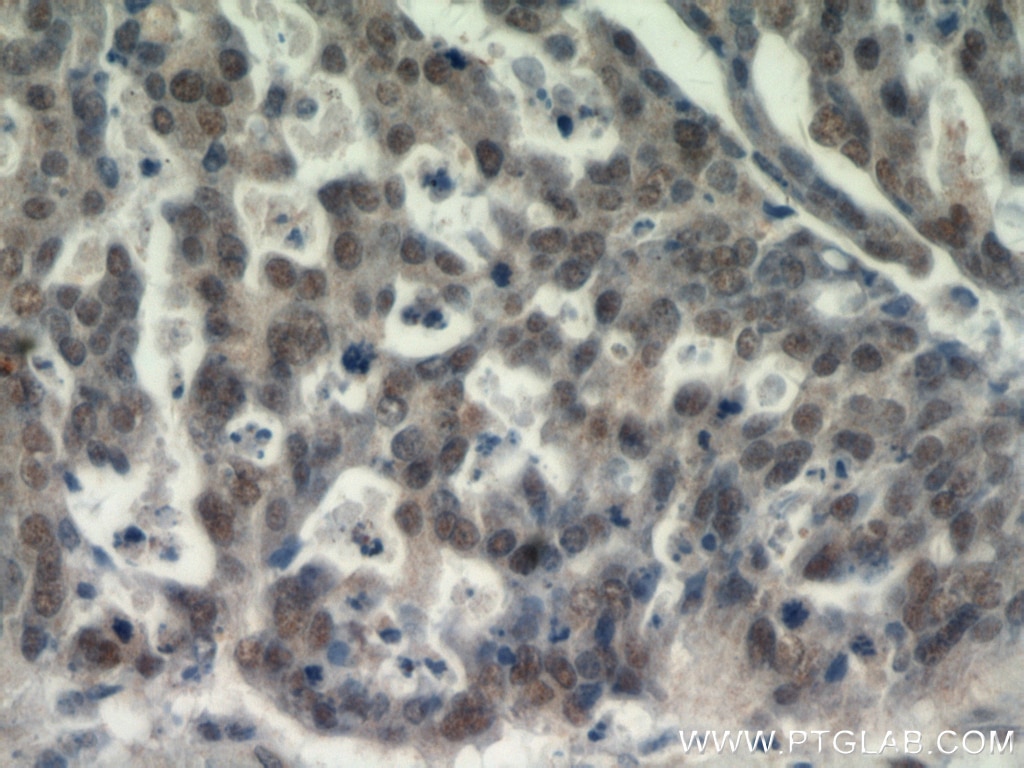CTR9 Polyklonaler Antikörper
CTR9 Polyklonal Antikörper für IHC, WB,ELISA
Wirt / Isotyp
Kaninchen / IgG
Getestete Reaktivität
human, Maus
Anwendung
WB, IHC,ELISA
Konjugation
Unkonjugiert
Kat-Nr. : 20672-1-AP
Synonyme
Galerie der Validierungsdaten
Geprüfte Anwendungen
| Erfolgreiche Detektion in WB | HeLa-Zellen |
| Erfolgreiche Detektion in IHC | humanes Ovarialkarzinomgewebe Hinweis: Antigendemaskierung mit TE-Puffer pH 9,0 empfohlen. (*) Wahlweise kann die Antigendemaskierung auch mit Citratpuffer pH 6,0 erfolgen. |
Empfohlene Verdünnung
| Anwendung | Verdünnung |
|---|---|
| Western Blot (WB) | WB : 1:500-1:1000 |
| Immunhistochemie (IHC) | IHC : 1:20-1:200 |
| It is recommended that this reagent should be titrated in each testing system to obtain optimal results. | |
| Sample-dependent, check data in validation data gallery | |
Produktinformation
20672-1-AP bindet in WB, IHC,ELISA CTR9 und zeigt Reaktivität mit human, Maus
| Getestete Reaktivität | human, Maus |
| Wirt / Isotyp | Kaninchen / IgG |
| Klonalität | Polyklonal |
| Typ | Antikörper |
| Immunogen | Peptid |
| Vollständiger Name | Ctr9, Paf1/RNA polymerase II complex component, homolog (S. cerevisiae) |
| Berechnetes Molekulargewicht | 134 kDa |
| Beobachtetes Molekulargewicht | 130-150 kDa |
| GenBank-Zugangsnummer | NM_014633 |
| Gene symbol | CTR9 |
| Gene ID (NCBI) | 9646 |
| Konjugation | Unkonjugiert |
| Form | Liquid |
| Reinigungsmethode | Antigen-Affinitätsreinigung |
| Lagerungspuffer | PBS mit 0.02% Natriumazid und 50% Glycerin pH 7.3. |
| Lagerungsbedingungen | Bei -20°C lagern. Nach dem Versand ein Jahr lang stabil Aliquotieren ist bei -20oC Lagerung nicht notwendig. 20ul Größen enthalten 0,1% BSA. |
Hintergrundinformationen
CTR9, also named as KIAA0155 and SH2BP1, contains 16 TPR repeats. It is widely expressed. The antibody recognizes the C-term of CTR9.
Protokolle
| Produktspezifische Protokolle | |
|---|---|
| WB protocol for CTR9 antibody 20672-1-AP | Protokoll herunterladen |
| IHC protocol for CTR9 antibody 20672-1-AP | Protokoll herunterladen |
| Standard-Protokolle | |
|---|---|
| Klicken Sie hier, um unsere Standardprotokolle anzuzeigen |





